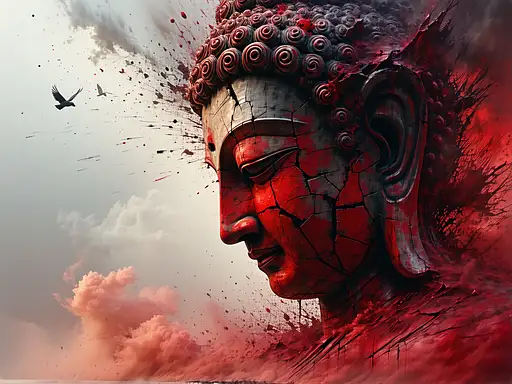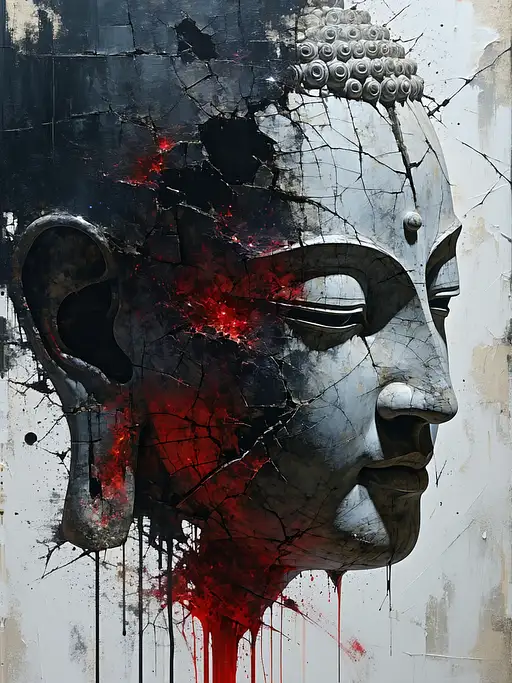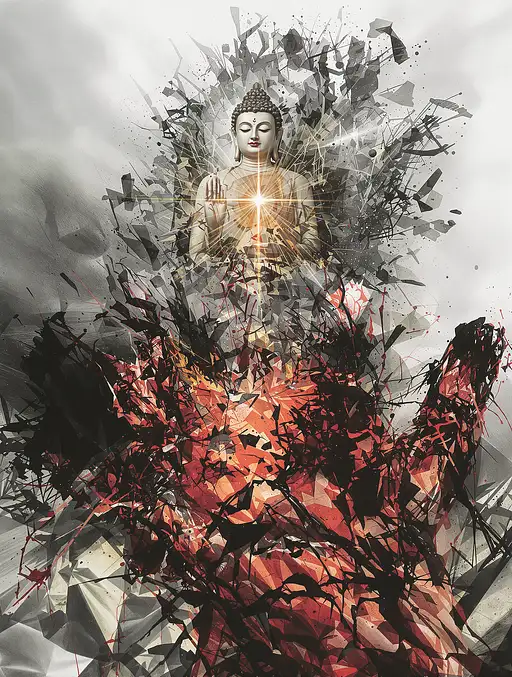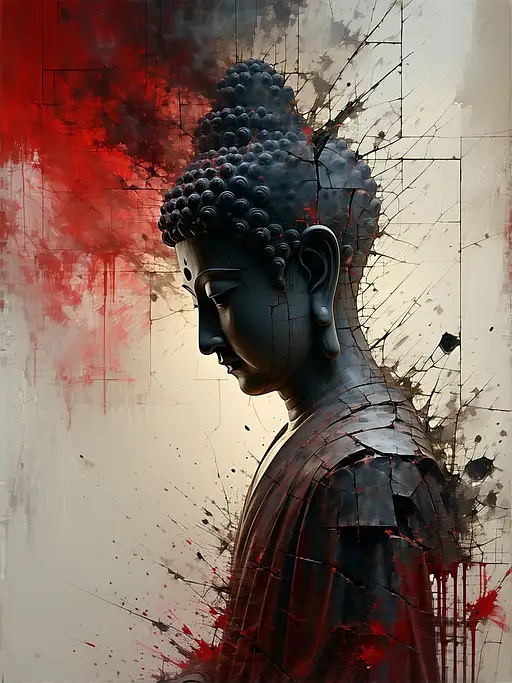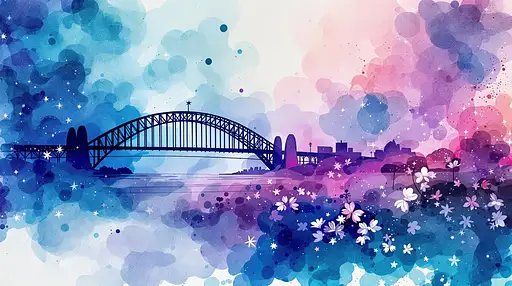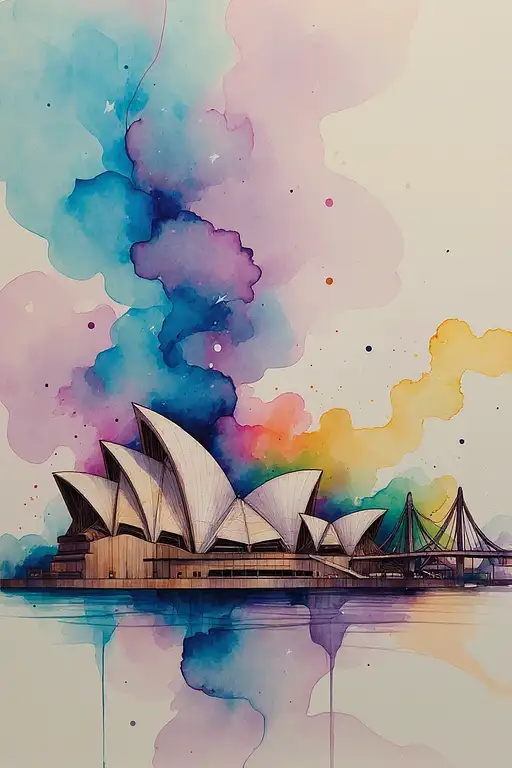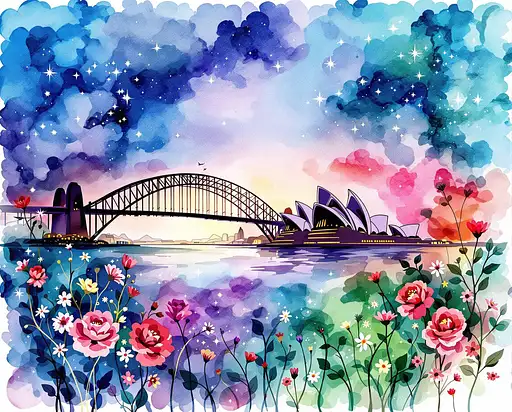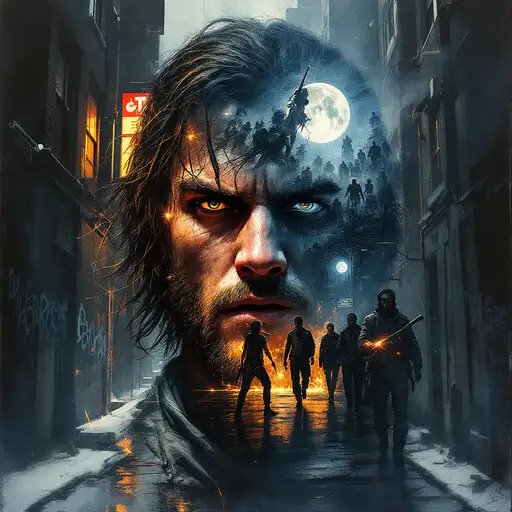
5 months ago
Craft a dynamic and emotionally charged oil painting that uses the double exposure technique to capture the raw energy, unity, and struggles of The Warriors. The central figure should be one of the Warriors, such as Swan, his face half-translucent and fierce, embodying both the individual and collective spirit of the gang. His expression should be filled with determination and defiance, while his figure dissolves into the gritty, chaotic streets of 1970s New York City—dark alleys, graffiti-tagged walls, and the stark silhouettes of neon lights. His features should bleed into the urban landscape, as though he is both a part of the city and a symbol of rebellion against it. Inside his form, a web of interconnected images from the Warriors' journey should emerge: the haunting image of the baseball bat-wielding Rogues, the fire-lit glow of the moonlit escape across subway tunnels, and the strong camaraderie of the Warriors themselves, seen through their shared struggles and brotherhood. The double exposure should seamlessly integrate these elements into his figure, illustrating the tension between individual survival and the unbreakable bond of the gang as they face overwhelming odds together. The color palette should reflect the gritty urban feel of the film, with cool blues, grays, and blacks contrasted with the neon oranges, reds, and greens of the streetlights and graffiti. The atmosphere should feel electric, filled with an undercurrent of danger, defiance, and unspoken loyalty. The oil painting should evoke a sense of movement—like a snapshot of the Warriors running through the night, the harsh cityscape blurring into their form, and the struggle against the forces that threaten to tear them apart. This double exposure composition should not only explore the Warriors' journey through the hostile streets but also the emotional and psychological depth of their fight for survival and unity. The contrast between the rawness of their environment and the bond they share should be at the heart of this painting, encapsulating the spirit of The Warriors as a timeless symbol of resilience and brotherhood.








